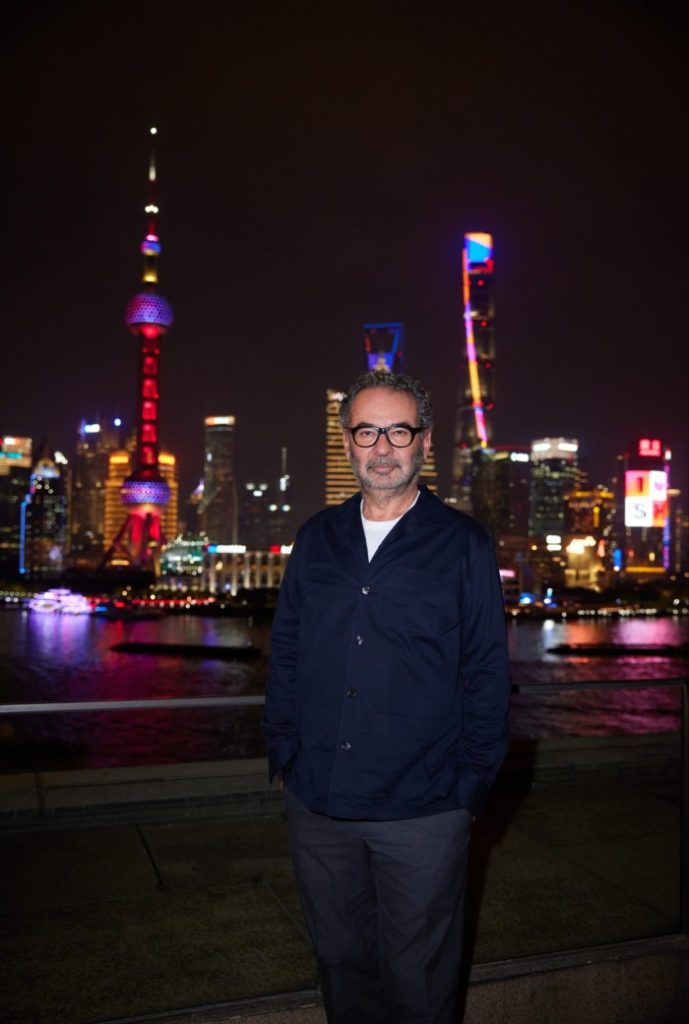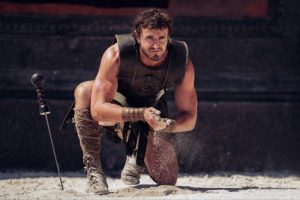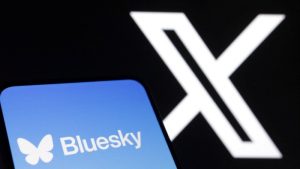Moncler chief on defying China’s new normal to ‘build the strongest brand ever’

China is abuzz with fashion activity. From Vivienne Westwood’s show at Shanghai Fashion Week to Paul Smith’s new flagship opening and Lacoste’s special game for tennis player Novak Djokovic on the Great Wall of China, you could have, for a moment, forgotten about the prolonged downturn in spending from China, which has been a big barrier for the global luxury and consumer goods sectors.
This weekend saw the latest iteration of Moncler’s Genius project, an annual blockbuster spectacle (it’s fashion show meets art installation meets musical performance) created with a star-studded roster of collaborators. This time it included nine immersive sets, ranging from a California-inspired farmhouse, featuring youthful workwear, by Donald Glover to a stark black-and-white collection, set in a post-apocalyptic garden, by Willow Smith. Staged at the CSSC pavilion on the Huangpu River waterfront and attended by the likes of Anne Hathaway and Rihanna (whose partner A$ap Rocky performed at the after-party), it marked the first time the event took place outside of Italian brand Moncler’s home market, Europe.
Despite the economic uncertainty weighing on China’s middle-class consumers and a government crackdown on ostentatious displays of wealth, Moncler’s chief executive Remo Ruffini sees value in keeping his foot on the gas. “[Luxury] shares are very volatile today because the market is nervous, not only about China, but in general,” he says in-between discreet puffs on a vape (the only item on his persona that isn’t in dark blue — his preferred colour, judging by the head-to-toe navy he often wears) when we meet in London ahead of his flight to Shanghai. “But I always think long-term. To have a strong brand you have to think about what’s happening in five years.”

Moncler, whose sales grew 8 per cent in the first half of 2024 to €1.23bn, does not break out numbers by country, although Asia-Pacific is its biggest market, accounting for 49 per cent of sales. Analysts say that Moncler, which opened its first store in the Chinese mainland in 2009 and now counts over 600 employees and more than 45 boutiques in the country, has maintained its growth in China while many other luxury labels have faltered. Ruffini, who acquired Moncler — then an almost bankrupt skiwear brand — in 2003, says he sees even greater potential: “It could be difficult today in China but, for sure, it will be one of the biggest markets in the future.”
That was a driver behind Ruffini’s decision to bring Genius — one of Moncler’s three divisions, alongside its main offering Moncler Collection and technical range Moncler Grenoble — to Shanghai, as well as his love for the country, which he has been enamoured with since his first visit about 20 years ago. While Ruffini stresses the importance of “understanding different cultures and never focusing on just one market”, he has found China’s energy and pace enthralling. “What they have done in the last 20 years, it takes Europe 100 years to make the same evolution — that’s not only in fashion but everything like the infrastructure and culture. I think it is honestly impressive.”
Moncler Genius is undergoing an evolution itself. When it was first introduced in 2018, inspired by the popularity of streetwear’s drop model, it offered collaborations with fashion designers such as Pierpaolo Piccioli, formerly creative director at Valentino, Simone Rocha and Craig Green, who created designs interpreting Moncler’s identity that were released on a monthly basis. (Piccioli, for example, created large floor-sweeping puffer dresses, while Rocha leaned into her darkly romantic aesthetic with outerwear and separates made from micro taffetas and nylon légere). “The beginning was incredible and I thought I had found a new way to talk with our community,” recalls Ruffini.

Amid the onset of the pandemic in 2020, Genius continued its drops digitally, but that didn’t feel right for Ruffini. “Online was less interesting, at least from my point of view,” he continues. “Maybe we were able to reach more people around the world, but I always care about the energy and it didn’t feel the same.” The executive also wondered if the company, which had never been a fashion insider’s brand to begin with, was limiting itself, so “I decided to start talking with talent from different industries.”
While Moncler Genius still collaborates with designers, it has since broadened its scope to include musicians, actors and even luggage and car companies. “The approach that they have is totally different than a classic designer,” says Ruffini. Does that not add some degree of difficulty, I ask? Ruffini briefly sidesteps the question — “it’s super charming,” he responds, but then acknowledges: “It’s not easy.” He caveats that creatives that aren’t traditionally trained designers have an open mind. (I’m then shown a video, on an iPad, with a narrator explaining that more children qualify as geniuses than adults, because of the reluctance to experiment and take risks as one ages).
“Revenues are important for the company, but brand is super important,” says Ruffini. “I always talk with my people and say: ‘we have to build the strongest brand ever’.” Pressed on what exactly that means, Ruffini explains: “It’s a different journey because we involve [multiple] generations. When I go to our stores, a kid with a snowboard is there to buy a jacket, but their grandmother is also there to buy a jacket. That is the energy I would like us to have.”

Immersive experiences like Genius also allow people to engage with the brand, therefore cultivating loyalty, without buying a single product. Ruffini reflects on an interaction he had at the last event, held in London, in 2023: “One person came up to me and said ‘thank you, because you make me dream’.” The significance, he says, is that while they may not have been a customer, they had been converted as “an ambassador of the brand”.
Moncler is taking a slightly more measured approach this time. Compared with the London Genius edition I went to, which drew over 10,000 guests including a mix of celebrities, creative professionals and students, creating crowds that were overbearing and at times exhausting to navigate, the Shanghai event will be limited to about 6,000. The idea, Ruffini says, is to let attendees comfortably move around and enjoy themselves for longer in the venue. “I don’t want to say it’s more quiet, but it will give them more time to understand each artist, designer or talent.”

Coco Yu, co-founder of CP Concept, a China-focused communications agency with clients including Burberry, MaxMara and Lululemon, believes that Moncler is making the right moves. She identifies “unique, localised and emotional” experiences as key for brands to engage with Chinese consumers, adding that Genius has helped to create a halo around Moncler that “enhances its image locally” and “creates a ‘wow’ factor that attracts luxury spenders”.
Another boon for Ruffini is the minority stake taken this month by LVMH in his Double R holding company, which controls Moncler. Under the terms of the agreement, the French luxury group can raise its 10 per cent stake to 22 per cent. Meanwhile, using LVMH funds, Double R will increase its stake in Moncler to up to 18.5 per cent over the next year and a half.
On why Ruffini welcomed LVMH CEO Bernard Arnault’s interest, there are obvious opportunities, such as the billionaire’s ability to draw talent and secure prime retail locations — although Ruffini insists that they’re nothing more than two amicable entrepreneurs. He points to the Langosteria restaurants, which he owns a stake in, as an example of a “very good experience” with Arnault (the Milan-based eatery expanded to Paris in 2021 in a partnership with the Cheval Blanc hotel owned by LVMH).
Ruffini sees opportunities for Moncler to expand beyond its skiwear origins and into products for adjacent outdoors sports, including hiking and biking. “Things changed a lot after Covid-19, and I think that people want to enjoy life in a different way.” The continued goal, he says, is to tap into micro-communities. “It’s important to have new energy and talent to express the brand. Our game is always to stay tuned into the community, because the world is very fast. China is also super fast, and that’s what I love.”
Sign up for Fashion Matters, your weekly newsletter with the latest stories in style. Follow @financialtimesfashion on Instagram and subscribe to our podcast Life and Art wherever you listen
#Moncler #chief #defying #Chinas #normal #build #strongest #brand





